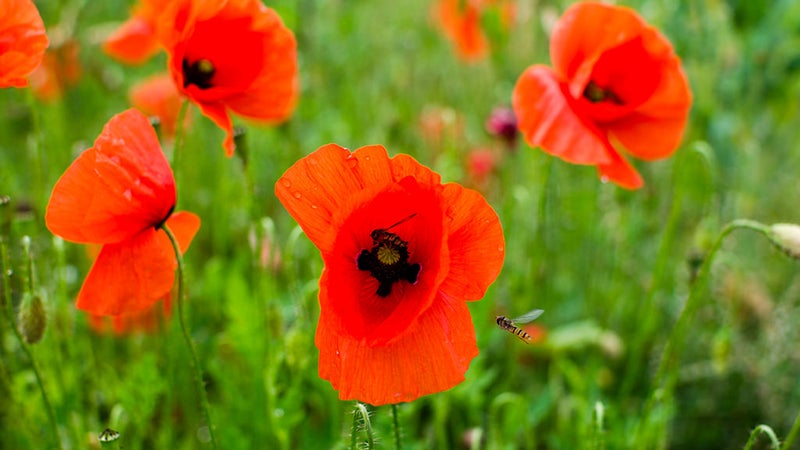Red poppies are for remembrance
Published 3:57 pm Saturday, May 26, 2018
|
Getting your Trinity Audio player ready...
|
Plant in full sun with good drainage
Kristin Hendricks
In Flanders fields the poppies blow
Between the crosses, row on row,
That mark our place; and in the sky
The larks, still bravely singing, fly.
Scarce heard amid the guns below.
May is a time for remembering and memorials. The common red poppy flower is a well-known symbol of the blood spilled in the four years (1914-1918) of The Great War (World War I) and lauded by the 1915 poem “In Flanders Fields” written by Canadian physician Lieutenant-Colonel John McCrae. The poem’s opening lines refer to the abundant poppies that were the first flowers to bloom in the disturbed earth of the allied soldiers’ graves in Flanders (Belgium.)
The term remembrance poppy was first used in 1921 by the Royal British Legion, and is now internationally used in many countries to commemorate military personnel who have died in war. Bright artificial poppy flowers are often distributed at charity events on Memorial Day in the United States to remember the fallen and honor their ultimate sacrifice with hope that their lives were not lost in vain.
Although native to Europe and Asia, Papaver rhoeas has naturalized in many parts of our country since this plant’s introduction. This delicate-looking annual features interesting-looking, drooping buds that unfold to bloom. Multiple scarlet-red petals form to make each flower with a distinctive black dot at the petal’s base. Pink or white flowers may also occur. This resilient wildflower is commonly known as the corn poppy given its readiness to flourish in farm fields, i.e., a broad-leaved agricultural weed but an attractive one.
Pair this poppy with blue cornflowers and white verbena or shasta daisies for a striking color combination. Grow in clumps as they are showier when massed in rock gardens and border bed frontage (1.5 ft in height.) Maintenance requirements for the poppies are low, but place this plant in full morning sun with good drainage. Average rainfall is sufficient to meet a poppy’s water requirements. This poppy will bloom from late spring into summer.
The poppy self-seeds, so will remain in the garden year after year. Black-colored seeds are encapsulated until ripe when the barrel-like fruit will “pop” or explode to distribute its contents. Cut poppy flowers will remain fresh in water for a few days, but are better known as vibrant enhancements to wildflower meadows, cottage gardens or pollinator habitats.
Birds, bees and beneficial insects are all attracted to the field poppy, yet these plants are known to be deer-resistant. Look to VCE’s article HORT 62 Deer: A Garden Pest (pubs.ext.vt.edu/) and attend local master gardener events to learn about other plants that deer avoid. Events and publications are free and available to the public.
KRISTI HENDRICKS is a member of the Western Tidewater Master Gardeners. Contact her at GardenontheJames@yahoo.com.


